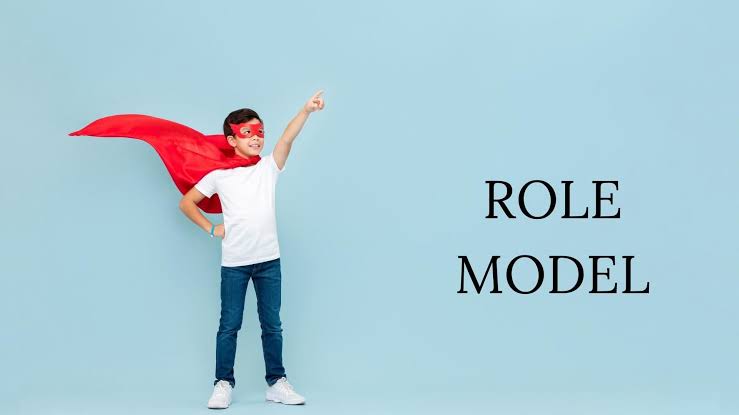In a world where influence shapes behavior more than instruction, the power of positive role modeling cannot be overstated. Whether in families, classrooms, workplaces, communities, or online platforms, role models leave lasting impressions—often more powerful than formal education or spoken advice.
As of July 2025, in an era driven by digital visibility and global connectivity, the need for positive role models is more crucial than ever. With social media giving everyone a platform and younger generations navigating uncertain social and economic realities, the people we choose to emulate play a vital role in shaping character, ambition, and resilience.
Leading Through Action, Not Just Words
One of the most defining traits of a positive role model is integrity—living in alignment with the values one promotes. It’s not what they say that makes them influential, but what they do consistently.
Whether it’s a teacher demonstrating patience, a parent showing empathy, or a leader admitting their mistakes and learning from them, these moments of authenticity resonate more deeply than lectures or commands.
Young people, in particular, learn best through observation. They often absorb behaviors unconsciously, modeling their tone, reactions, and decisions after the adults or peers they admire. This makes role modeling a quiet but powerful form of leadership that can ripple across generations.
Shaping Identity and Values
Role models don’t just guide behavior—they help shape identity. During formative years, especially adolescence, individuals seek examples that reflect who they want to become. A young girl may see a female engineer and believe a STEM career is within reach. A boy watching his older brother treat others with kindness might adopt the same respectful approach.
Positive role models reinforce values such as honesty, perseverance, respect, and responsibility—not through preaching, but by living these principles day by day. Over time, these values become internalized, forming the moral compass that guides future choices.
Inspiring Confidence and Ambition
People often rise to the level of the examples they see. When individuals witness someone they relate to overcoming adversity, reaching a goal, or leading with courage, they start to believe they can do the same. This belief is the seed of ambition.
In 2025, with social media offering instant access to global stories of resilience, positive role models are no longer confined to one’s immediate environment. Young minds are inspired by entrepreneurs, athletes, artists, and change-makers who look like them, speak their language, or share their background.
This exposure can break cycles of limitation. It tells the viewer, “If they can do it, so can I.” It moves people from passive dreaming to active striving.
Encouraging Accountability and Growth
Being a role model isn’t about perfection—it’s about accountability and growth. People connect more deeply with those who show vulnerability, admit their faults, and demonstrate how they’ve learned from them. This humanizes success and makes personal development more accessible.
When role models are open about their journey—the setbacks, failures, and lessons—they teach others that growth is a process. This mindset encourages perseverance and resilience, especially when facing personal challenges or setbacks.
By modeling humility, reflection, and a willingness to improve, role models show that character is not something we’re born with, but something we build.
Fostering Inclusive and Empowered Communities
Positive role modeling goes beyond individuals—it can shape entire communities. When inclusive, compassionate leaders rise within neighborhoods, workplaces, or online spaces, they set a cultural tone that others follow.
For example, a team leader who fosters collaboration instead of competition creates an environment where everyone feels valued. A public figure who uses their platform to amplify marginalized voices inspires others to do the same.
This collective modeling builds a stronger, more empathetic society. It encourages people to take responsibility not just for themselves, but for how they influence others and contribute to the greater good.
The Digital Dimension of Role Modeling
In 2025, the majority of role modeling happens not face-to-face, but through screens. Social media influencers, YouTubers, podcasters, and content creators now hold sway over millions, especially youth. This shift brings both opportunity and risk.
On the positive side, digital platforms allow positive messages and stories to travel farther than ever. A young activist in Lagos can inspire students in London. A fitness trainer in São Paulo can motivate viewers in Seoul.
But it also means that negative or harmful behaviors can go viral just as quickly. That’s why digital role models carry immense responsibility. Every post, comment, or reaction becomes a form of teaching—whether they realize it or not.
The solution lies in conscious influence. Digital creators, educators, and even casual users must ask: What am I modeling through my words and actions online? This awareness can lead to more intentional, uplifting content that supports healthier minds and communities.
Everyday Role Models Matter Most
While celebrities and public figures are influential, the most impactful role models are often those closest to us—parents, coaches, teachers, neighbors, colleagues, or older siblings. These individuals shape lives through consistent presence, everyday conversations, and real-life example.
A teacher who believes in a struggling student, a mother who shows up every day with compassion, a boss who encourages growth over fear—these are the role models who leave indelible marks on character.
You don’t need fame or a platform to be a role model. Every action is an opportunity to show someone what’s possible, what’s right, and what’s worth striving for.
Becoming a Role Model Yourself
Everyone has the potential to be a positive role model. It starts with intention—being aware of the influence your actions have, especially when others are watching.
You can model:
- Integrity by keeping your word
- Empathy by listening without judgment
- Resilience by showing up even after failure
- Respect by treating others with kindness, regardless of status
- Growth by embracing learning and change
These simple, consistent behaviors have a ripple effect. You may never know who you’re inspiring just by being true to your values.
Conclusion: Influence That Transforms Lives
Positive role modeling is one of the most powerful forms of influence. It doesn’t require grand gestures, fame, or formal authority. It simply requires authenticity, intention, and consistency.
In a rapidly evolving world where young people are bombarded with conflicting messages, the presence of grounded, value-driven role models provides stability, hope, and direction. They help shape not only better individuals but a better society.
So whether you’re a parent, teacher, teammate, leader, or content creator, remember: someone is watching. And your example might just be the light they need to see what’s possible.



